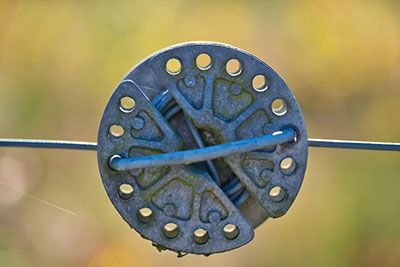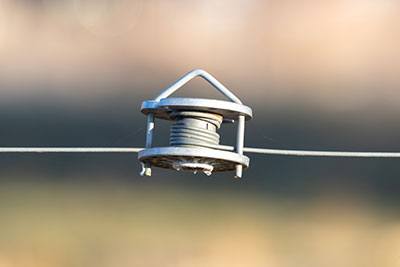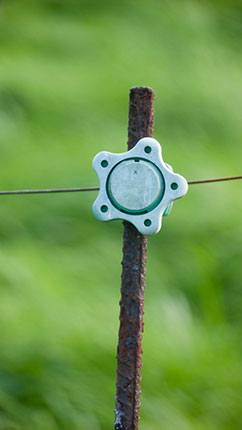Building the perfect fence doesn’t have to be a hassle. With the newest electric fence tensioner, you can ensure precise tension‐level in your fencing materials.
Strap on these modern tools and discover how effortless building an attractive protective barrier around your property is. Learn why this tool has become essential for any fencing project, what makes it so effective, and how you can use it for professional-level results.
Take away key points:
- Tensioners will help you keep the tension in the line optimal
- The tools are easy to use and adjust, to protect your land from pests and predators
- You need to maintain the tensioners properly to ensure the optimal fencing usage
Table of Contents
- All you need to know about electric fence tighteners
- Frequently Asked Questions
- Conclusion
All you need to know about electric fence tighteners
If you don’t have much experience in electric fencing, this is the right guide for you! Below you can learn all features and benefits the tensioners offer. You will learn how to tighten your fencing to keep it optimal with a low-cost product.
Let’s see.
What is an electric fencing tensioner?

An electric fencing tightener is a device used to maintain the tension of a fencing system. It helps keep the wire taut and secure, preventing sagging or loosening of the wires.
Electric fencing tensioners come in various sizes and types, depending on the type of fence being used.
What are the types of fence tighteners?
There are several categories of electric fence tensioners available. These categories include in-line tensioners, portable tape tensioners, and wire rope tensioners.
1. In-line tensioners
In-line tensioners are designed for use with high-tensile wire and can be used to connect the wire to posts or other fixtures.
2. Portabletape tensioners
Portable tape tensioners are ideal for temporary fencing applications and can be used with poly wire or poly tape.
3. Wire rope tensioners
Wire rope tensioners are designed for use with steel wire rope and provide a secure connection between the rope and the post.
No matter which type of tensioner for the electric fence you choose, it is important to ensure that the correct amount of tension is applied to keep your system effective. This will help ensure that animals receive an immediate kick when they touch the wire.
Can you use the poly wire tensioner for the electric fence?

Yes, you can use a poly-wire tightener for an electric fence. A poly wire tensioner is a device that helps to keep the wires taut and secure. It also holds poly wire optimal for more robust use. This ensures that the poly-wire fencing will be able to contain livestock or other animals effectively.
What are the benefits of the poly wire tightener?
The benefits of using a poly wire tightener for an electric fence include improved security, increased durability, and greater flexibility.
With improved security, the poly-wire tightener ensures that the fence remains tight and secure, making it difficult for animals to escape or intruders to enter.
The increased durability of the poly-wire fence tightener also means that it will last longer and require less maintenance over time.
Finally, the flexibility of the tightener allows you to adjust the tightness of the wires as needed, ensuring that your electric fence is always working at its best.
Overall, a poly-wire tightener is an essential tool for any electric fencing system, providing improved security and durability while also allowing for greater flexibility.
How to purchase the best tightener for the electric fence?
Choosing the best tightener for an electric fence is an important decision that can affect the safety and effectiveness of your fence.
There are several features to consider when selecting a tightener, including gauge wire categories, tension techniques, and types of tighteners.
1. Gauge wire selection
Gauge wire availability is important because it affects the amount of current that can be passed through the fence. Generally, aluminum or steel wires are the most cost-effective and simplest option of the recommended gauge wire tools.
However, if you require more current to pass through your fence line, then you may need to select a thicker gauge wire.
2. Tension techniques
When it comes to tension techniques, there are two main methods: manual tensioners and ratchet tensioners.
Manual tensioners require you to manually adjust the tension on the wire with a lever or crank handle.
Fence tensioner ratchet uses a ratcheting mechanism to quickly and easily tighten the wire without having to manually adjust it each time.
3. Different product types
Finally, there are several different types of fence tensioners available on the market today. These include:
– In-line tighteners which attach directly to the wire;
– Post-mounted tighteners which attach to posts along the length of your fence;
– Portable tape tighteners which can be used for temporary fencing applications.
No matter which type of fence tightener your purchase, you must install and maintain the product properly, to ensure maximum effectiveness and safety for your animals or property.
Tips to properly maintain a tightener

Maintaining a fencing tightener is essential for ensuring the safety of your property and livestock. Properly functioning electric fencing can be effective in deterring predators and keeping critters out of your garden.
Here are some tips to help you properly maintain your fencing tightener:
– Check the tension on your line regularly. This will ensure that the wires stay taut and will prevent sagging, which can reduce the effectiveness of the product. You can use a line tightener tool or a permanent wire tightener to keep the tension consistent.
– Inspect all components of your line, including posts, insulators, connectors, and wires, for any signs of wear or damage. If any components need to be replaced, make sure to do so as soon as possible to avoid further damage to the fencing.
– Make sure that all connections between components are secure and free from corrosion or rust. If necessary, clean off any dirt or debris that may have accumulated on the connections with a damp cloth or brush.
– Test your line regularly using an appropriate testing device to make sure it is functioning properly and providing adequate protection against predators and pests.
– Keep weeds away from your construction by trimming them back regularly with a weed trimmer or brush cutter. This will help prevent short-circuiting caused by weeds touching the wires of your electric system.
By following these tips for proper maintenance of a tightener, you can ensure that it continues to provide effective protection against predators and pests for years to come!
Frequently Asked Questions
How to install electric fence tensioners?
For in-line fences, you can use rail fence tensioners to tighten the wire. These tensioners attach to the posts and provide enough pressure to keep the wires taut.
You can also use Daisy wheels for tightening your fence wire. Daisy wheels are less expensive than other types of tensioners and they provide enough pressure to keep your wire taut without damaging them.
How to use an electric fence tensioner?
Follow the steps below:
– Choose the right tensioners for your fences. There are two types of tensioners available – plastic wirer tightener and daisy wheel – select the one that best suits your needs.
– Attach them to the posts at each end of your fencing. Make sure they’re securely fastened in place before proceeding.
– Start tightening the conductors with your tensioners. Start at one end and work your way along, making sure to apply even pressure as you go. You’ll need to adjust them periodically as they will loosen over time due to weather conditions or animal pressure on the construction.
– Use a tester tool or meter to measure its voltage level. If it’s too low, then you’ll need to adjust the tensioners accordingly until you reach a satisfactory level.
– Double-check all connections and make sure everything is secure before switching on the power supply for your system.
Conclusion
As you see, the tightener will prove a great assistance to your construction, keeping the line optimal for more robust use. Learn its features to choose the best model for the lower price!

